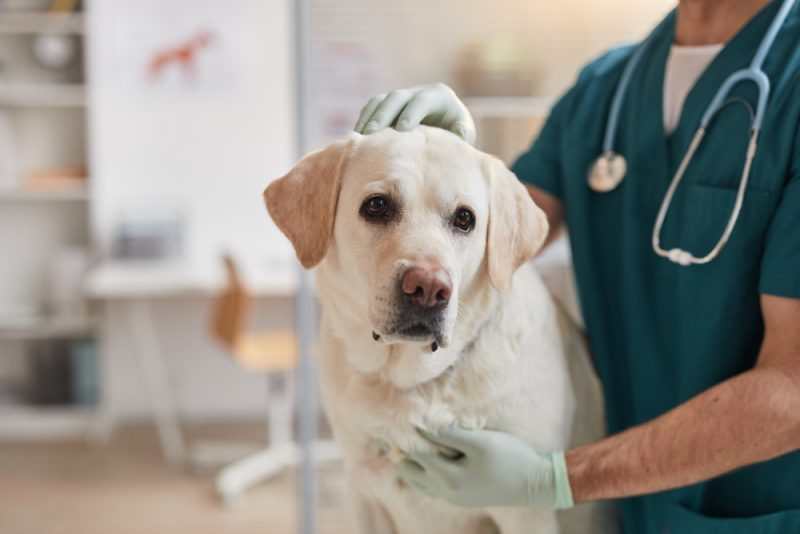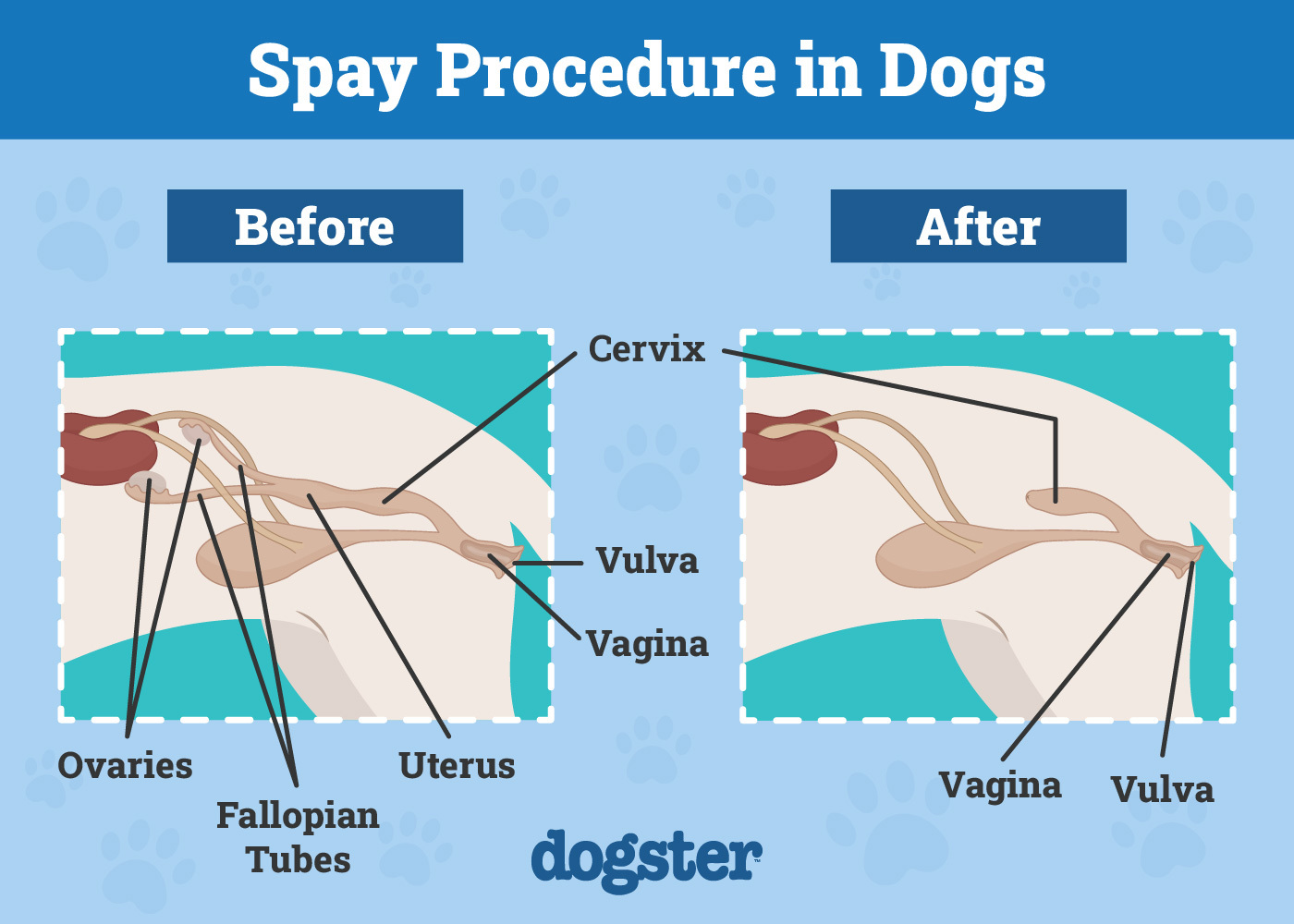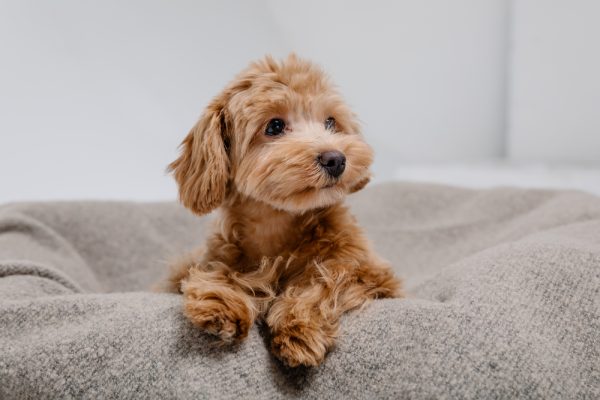In this article
View 3 More +Most veterinarians and animal welfare experts advocate for spaying and neutering dogs. However, more attention is being given to the optimal age of these procedures as we recognize that the standard 6-month age may not be beneficial for all breeds.
So what about the Labrador Retriever? In general, veterinarians recommend that Labradors are spayed or neutered at 12 months old, but there are a few things to consider. Keep reading to learn more about the current evidence and make the best decision for your dog.

Benefits of Spaying and Neutering Labradors

We spay and neuter our pets to avoid unwanted pregnancies and sexual behavior. With cat and dog overpopulation being a reason for animals living in shelters without loving homes, spaying and neutering your dog is an ethical decision. However, doing the right thing has other benefits for you and your dog. According to studies by the University of Georgia and Banfield Pet Hospital, spayed and neutered dogs live longer.
Since the surgery involves the removal of reproductive organs, the organs can no longer cause issues. Testicular and ovarian cancer cannot occur in spayed and neutered pets. In addition, some diseases are influenced by hormones.
Neutering reduces the risk of prostate problems like benign prostatic hyperplasia and prostatitis due to the effects of testosterone on this organ. Spaying a dog reduces the risk of mammary cancer, especially if they are spayed before their first or second heat. 50% of these cancers are malignant, meaning they have the potential to spread to other parts of the body.
Without the drive of sex hormones, spayed and neutered dogs show less roaming behavior in search of mates. This behavior can contribute to road traffic accidents and infectious diseases, which reduce the lifespan of these dogs. Their hormones can also cause sexual aggression, particularly toward dogs of the same sex, mounting, and unwanted urine marking behavior.
- Population control
- Improved lifespan
- Prevent some cancers
- Some behavioral benefits
Going forward, we will delve into issues specifically for male and female Labradors, but we want to discuss the side effects of sterilization that apply to all dogs. After the surgery, the pet’s metabolism changes, which results in them needing fewer calories. You should, therefore, feed your pet less after spaying or neutering and monitor their body condition score to ensure they aren’t getting too heavy, which we know is a common problem for Labradors.
Spayed and neutered pups, especially those fixed before 12 months of age, are a little more likely to have fearful behaviors. Females are more prone to anxious behavior, whereas males could have a slightly higher risk of aggression. We want to stress that spaying or neutering is not usually a good solution for behavioral problems at home.

Female Labradors
Female labradors will go into heat unless they are spayed. The first heat will occur at roughly 9 months of age, give or take a few months, but it’s not uncommon for unnoticed or “silent” heats to occur. Unless they are spayed, they will go into heat once or twice a year. During this time, she will have bloody vaginal discharge and will have a chance of getting pregnant if she mates. Due to the pheromones, male dogs will be highly attracted to her and your property.
Spaying is generally achieved by a procedure called an ovariohysterectomy, where the uterus and ovaries are removed, although there are procedures that spay by removing the ovaries only. Despite spaying being an almost daily occurrence at a veterinary clinic, this procedure is still considered invasive, and the risks should not be overlooked. A 2014 study showed that female dogs with a higher body weight or longer surgery time were more likely to have complications.

As the reproductive system matures, especially around the time of going into heat, it becomes more vascular, and the surgery becomes more lengthy. The downside of spaying a female Labrador at 12 months old is a higher chance of surgical complications. However, you can help minimize this risk by ensuring she doesn’t become overweight and waiting at least a month, if not 2 or 3, after a heat cycle to schedule the procedure.
So, why do most veterinarians recommend spaying at 12 months? A 2020 study showed that female labradors spayed before 12 months of age are more likely to develop joint problems than unspayed females. Cruciate ligament rupture is one of the main areas of concern for female Labradors. The cruciate ligament stabilizes the knee joint, and after it’s ruptured, the dog will experience pain and develop osteoarthritis in the joint. Surgery is needed to stabilize the joint.
The same study did not note any significantly increased risk of cancer with spaying Labradors. Interestingly, Labradors spayed later in life (between 2 and 8 years) had a slightly higher rate of mammary cancer than those not spayed at all. 2% of females that were not spayed developed pyometra, a serious infection of the uterus that requires surgery. Those pups spayed before a year old had a 2%–3% rate of urinary incontinence. Urethral sphincter mechanism incompetence (USMI) occurs as the sphincter, a muscle that closes the urinary tract, weakens without the influence of estrogen. Fortunately, this can be successfully treated with hormone replacements.
Another study showed that female Labradors had a 5.6% elevated incidence of cancer when spayed at 2–8 years, specifically for mast cell tumors, a common skin cancer, and lymphosarcoma, a cancer of the lymph nodes. However, this was not a statistically significant difference. This study showed that just under 4% of intact females had pyometra.
Male Labradors
Male Labradors experience a steady rise in testosterone from about 5 to 12 months old and become sexually mature in this period. They will be attracted to female dogs in heat and can mate and make puppies once they are sexually mature. Testosterone is produced in the testes, and neutering involves surgically removing the testicles. Forms of chemical castration are also available for dogs.

One study with 1,933 Labradors showed that males neutered before 6 months of age had a significantly higher incidence of joint problems than unneutered males. Those spayed from 7–11 months did not have a higher risk of joint problems, so in this single study, there is some evidence that neutering male Labradors over 6 months of age would not be detrimental to their joints. Fortunately, neutering did not impact cancer development in these dogs.
Joint diseases of major concern in male Labradors include cruciate ligament disease, which we have already discussed, and hip dysplasia, which is a malformation of the hip joint that can be painful and lead to osteoarthritis. Another study supported the joint-related findings in Labradors. Males and females collectively had twice the number of joint disorders when neutered before 6 months of age. It also showed no effects of neutering on cancers in male Labradors.
How to Prepare for the Spay/Neuter Procedure
It’s nerve-racking to send your dog in for surgery, no matter what kind of procedure it is. We have some tips to help you prepare for the day and the recovery period.
- Crate train your dog: After the spay or neuter procedure, you will need to rest your dog for 10–14 days. This means no running, jumping, or exercise during this time. Crating your dog will help them rest and relax after the procedure.
- Purchase a comfortable e-collar: We know no one likes the cone of shame (Elizabethan collar), but your pup will want to lick their surgery site, which can lead to infections and postoperative complications. Investing in a comfortable e-collar and getting your dog used to it before the surgery will save them a lot of discomfort when the time comes for them to wear it. A recovery suit can also be helpful instead of an e-collar.
- Set up a cozy bed: When your pup gets home, they will need a warm area to recover in. Keep them inside, with a clean bed and blankets to sleep on. You can place all this in their crate.
- Prepare some forage toys: You don’t want your dog to get too bored during recovery. While they can’t go for their usual run in the park, you can keep their mind active with foraging or puzzle toys.
- Fast your dog: The night before the surgery, your dog can have an early dinner, but nothing after about 10 pm /midnight. Don’t give them breakfast the morning of the surgery unless instructed otherwise. If your dog has any health conditions or medication, ask your vet for advice specifically tailored to your dog.
- Think about optional extras: Depending on the clinic, extras like pre-anesthetic blood testing or fluids during surgery could be an optional extra or part of the package. Fluids help hydrate your dog and maintain their blood pressure through the procedure. Blood tests look for health problems that could interfere with anesthesia and medication safety before the procedure.

Final Thoughts
In most cases, a female Labrador should be spayed between 12 months and 2 years. According to current studies, she will benefit most if she is spayed within this timeframe. Male Labradors generally have the same recommendations, but current evidence doesn’t point toward any health consequences if they are neutered after 6 months of age, which is different from findings in some other large breeds.
You may have other preferences based on your concerns and lifestyle. For example, if your dog needs to be neutered to attend daycare, you can neuter them a little earlier. In any case, the answer is not completely clear-cut, and if you’re unsure, you should speak to your vet. They can take your dog’s health and circumstances into account.
Featured Image Credit: Ihor Bondarenko, Shutterstock



















